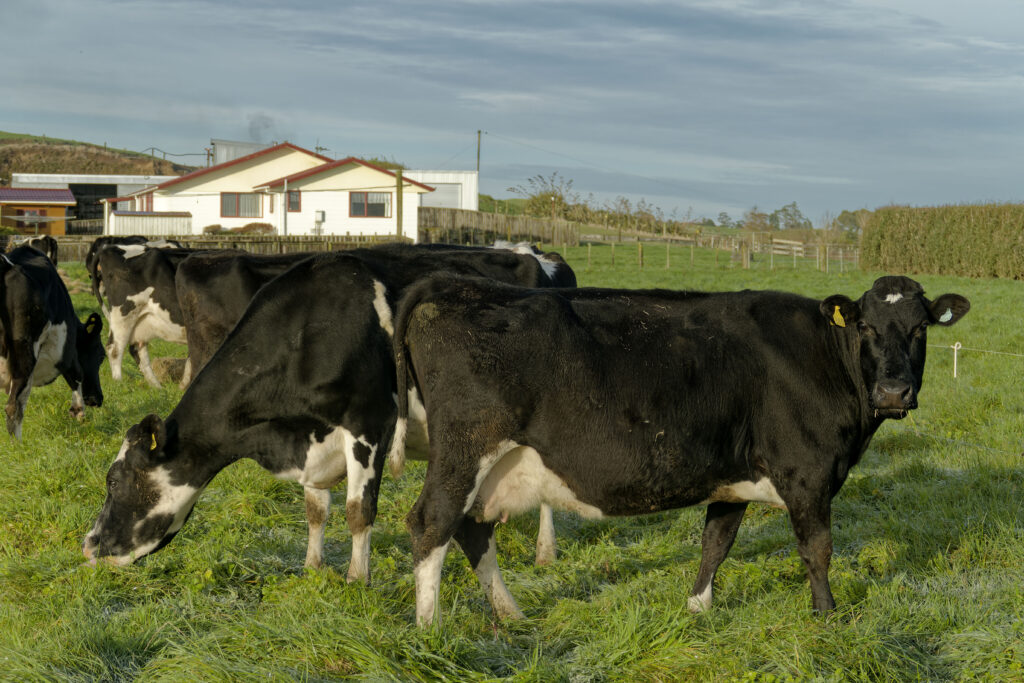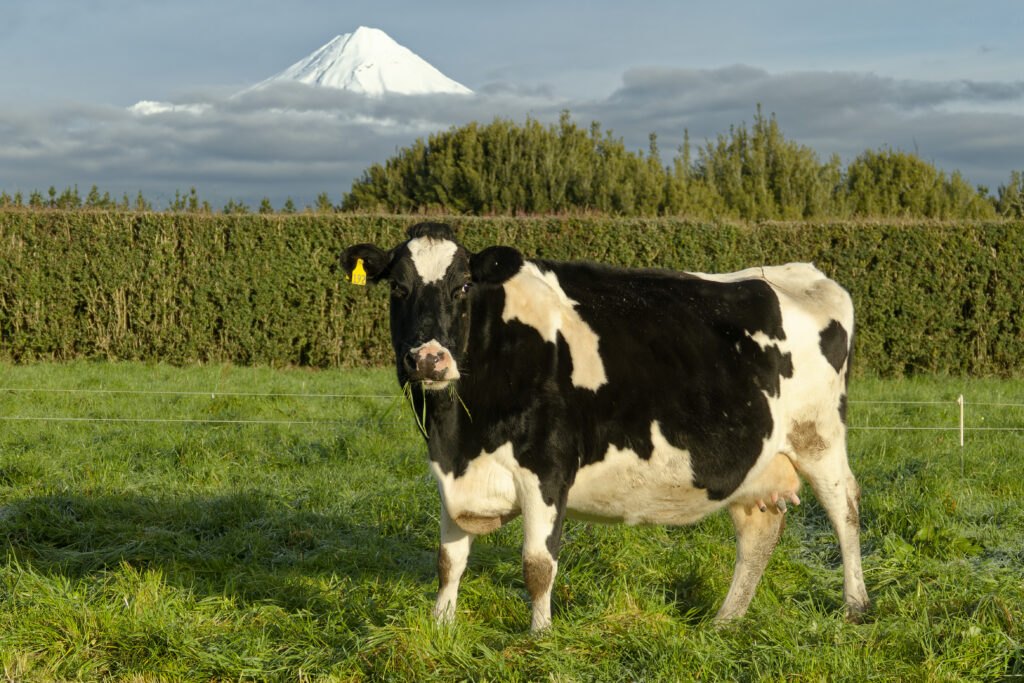This article first appeared in our sister publication, Dairy Farmer.
You only get one chance to raise healthy calves. Those calves are a farm’s future stock and if you don’t do them well at the beginning, and grow them well all the way through, they won’t come into the cowshed and perform for you.
This is the mantra that Taranaki farmers Adrian and Marianne Drummond adhere to when raising their calves and grazing their heifers. The Drummonds are heifer grazers, but also raise around 50 bull calves each year, and have a reputation for growing healthy calves.
They have a 52ha farm and a nearby 30ha runoff. They were dairy farmers from 2002 until 2018. In 2018 they decided that the compliance costs to upgrade their 12-a-side herringbone cowshed and plant were too high, and it wasn’t worth continuing milking.
“This is a small farm that milked 120 Friesian cows, and the compliance costs wouldn’t have been very different if we were milking 250 or 300 cows. We sold the cows and began grazing heifers,” Adrian says.
“One year we were on double pick up for about six weeks because we kept flooding the vat. During the last year we milked, we reared every calf so as not to flood it. We had calves everywhere and sold them as weaners.”
In a unique twist, they decided to milk 12 cows through one side of the cowshed to feed their 50 beef calves. They then sold their in-milk cows but kept a dozen older cows to feed calves.
“Now, each year we buy 12 cows from a neighbour in early May. When the calves are sold at the beginning of November, they take back the cows they want to continue milking, and the rest go to the processors,” he says.
“The following May they give us the same number of cows that they took back, and we buy the extras that we need from them. They take back any heifer calves from our cows and replace them with bull calves. It works well.”

The cows arrive after they’ve undergone dry cow therapy in early May. The Drummonds calve them, and the day the weaner calves are sold is the day they stop milking, and the cows leave the farm. The 12 cows are milked twice daily to get the greatest amount of milk from them.
“Our last cow calves on August 20 so we try to buy early calves within a three-week period, because we aim to get them to the first weaner beef sale in November. That’s when we get the highest price for them,” Adrian says.
“We buy some Hereford /Friesian cross bull calves directly from two local farmers, and the rest at the local four-day-old calf sales.”
Two years ago, they had a rotavirus outbreak, but fortunately only lost one calf. However, a great deal of time was spent drenching them with electrolytes.
“Fortunately, we got onto it quickly. We had a couple of calves that didn’t look quite right and immediately got the vet out to them,” Marianne says.
“It was tough going because we had to spend many hours treating them. We’re limited with shed space and the most difficult thing was trying to keep them separate.”
Following advice from another farmer who also had a rotavirus outbreak, they waterblasted the sheds, spread lime flour on the ground prior to applying the bedding, and to regularly disinfected pens.
“We disinfected the walls, rails, structures and the bedding. We disinfected the bedding on fine days when the calves were outside so it could dry.”
They decided that if they had another rotavirus outbreak they’d probably stop rearing calves. But last year they were free of it so have continued.
“Rotavirus is extremely hard to eliminate, and lime flour and disinfectant is a very cheap precaution. That’s not to say that we won’t get it again, but all you can do is put in the effort to minimise the risks,” Marianne says.
They believe the rotavirus was probably brought in by a calf from the four-day-old sales. They would prefer to buy all their calves from one farmer, but they don’t have the option of buying enough early Hereford calves to do that.
“We aim to sell our calves at the early November weaner sales, so need to get early calves. Nobody in this area has many early Hereford calves, so we need to buy most of ours at the four-day-old sales,” Adrian says.
Calves are fed colostrum for as long as it lasts, which isn’t long when you only milk 12 cows. Surplus colostrum is frozen in 20 litre drums to ensure that when they get to the tail end of the new calves, they still have colostrum on hand.
They gradually transition their calves from colostrum onto fresh milk because any abrupt feed change can cause the calves to scour.
“We usually have quite a few mobs because they’re all on a different types of milk. But once they’re all on the same milk it becomes very simple. The calves start off on 2.5 litres of milk twice daily, and it’s increased to three litres per feed as they grow,” Marianne says.
“They’re fed with a compartmentalised cafeteria. This ensures that each calf gets the correct amount of milk. The slow drinker’s share doesn’t get guzzled by the mob’s fast drinkers and you end up with a nice even line of calves. It also makes it easier to notice calves that aren’t drinking properly.”

The calves are fed twice daily for at least six weeks and have free access to hay and meal from the day they enter the calf shed.
The calves are fed milk right up to the day they go to the sale so the day they go to the sale is the day they’re weaned. Their stock agent is adamant that those calves always look better at the sale than calves that have recently been weaned prior to the sale.
“The calves are eating grass, hay and meal by then anyway; milk is only part of their diet. We stop feeding meal about a week before the sale,” Adrian says.
If the weather is fine, they let the calves have free access to the paddock within four days of arriving.
“At that age they’re still timid and finding their feet. We find that if we let them out early they find the boundaries faster and easier, and don’t push through fences. We bring them in during the late afternoon and keep them inside at night,” Adrian says.
Last year the heavier calves averaged 125kg and the lighter ones around 115kg.
The weaners go to the saleyards and are usually sold in two lots. They don’t split them up by weight; their stock agent picks them by eye with the aim of getting a similar and consistent line of calves in each lot.
They hold back calves that won’t fit into or might weaken the line. They stay on the farm to be reared through to two years old.
“The beef calves are always the best sellers. Friesian calves can have good and bad years, and there’s not much margin in it. We can’t run all 50 calves through to two years old because it would just be too many mouths to feed here, and the grazing heifers take priority,” Adrian says.
Even with 12 cows the Drummonds must be mindful of typical dairy cow problems such as milk fever and must still dust the paddocks.
“But when you milk, you run one line of cows into one side of the herringbone, milk them, and you’re finished,” Adrian says.
“We’re still busy doing things on the farm, we just don’t have to get up as early anymore and we only must milk twice a day for three months. It doesn’t really matter what time we milk, because no tanker is coming,” Marianne says.










